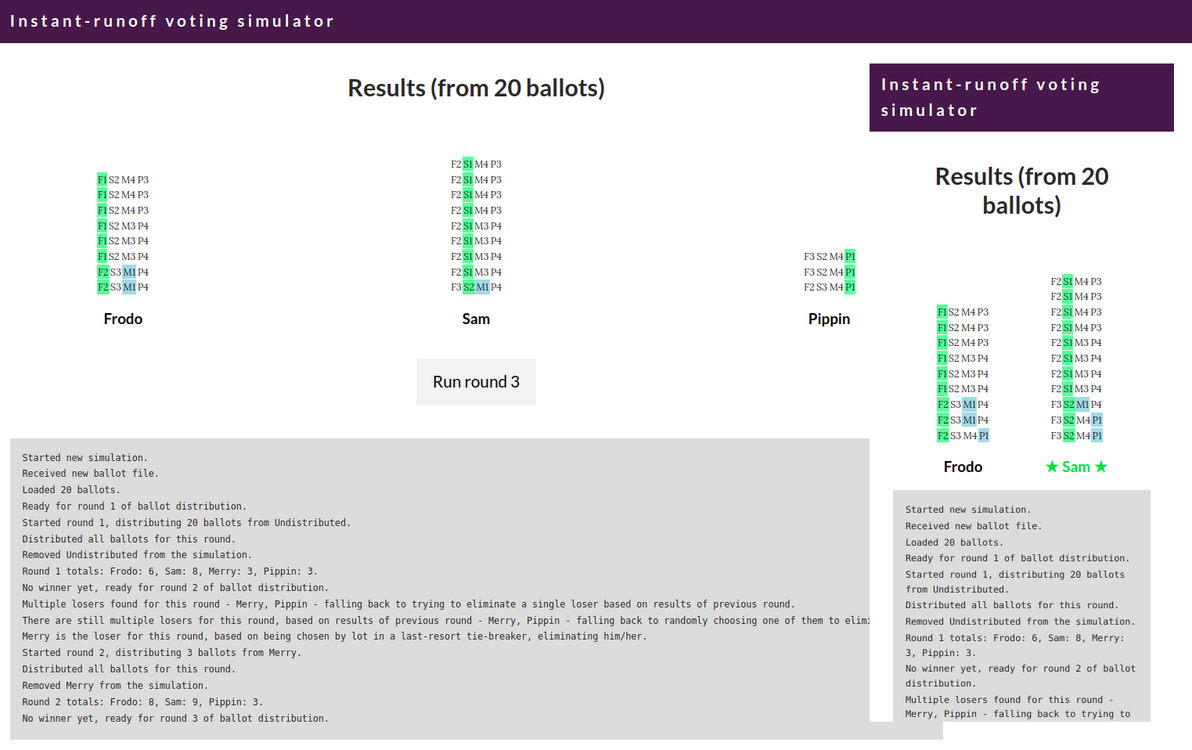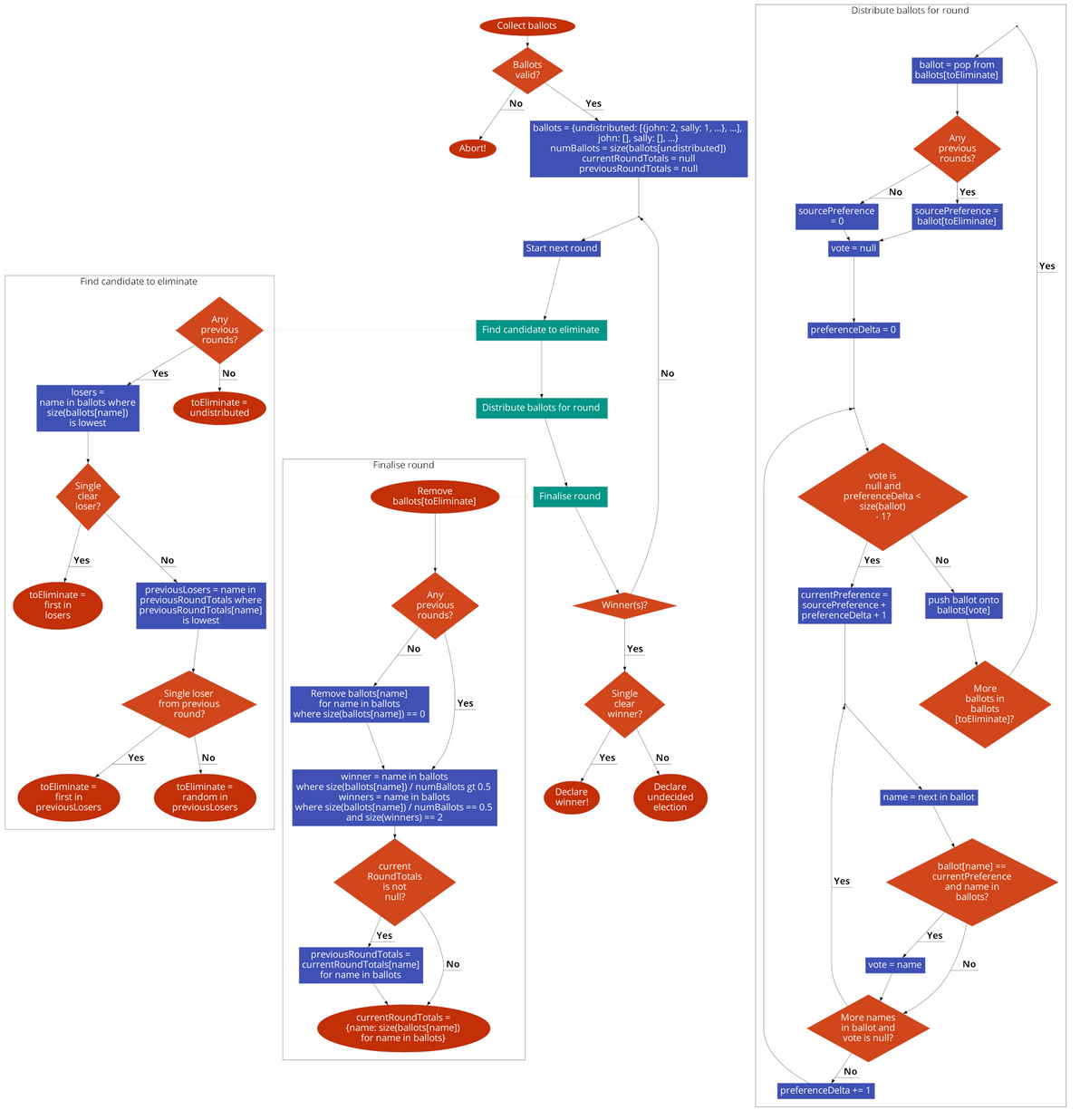Introducing: Instant-runoff voting simulator
I built a simulator showing how instant-runoff voting (called preferential voting in Australia) works step-by-step. Try it now.

I hope that, by being an interactive, animated, round-by-round visualisation of the ballot distribution process, this simulation gives you a deeper understanding of how instant-runoff voting works.
The rules coded into the simulator, are those used for the House of Representatives in Australian federal elections, as specified in the Electoral Act 1918 (Cth) s274.
There are other tools around that do basically the same thing as this simulator. Kudos to the authors of those tools. However, they only output a text log or a text-based table, they don't provide any visualisation or animation of the vote-counting process. And they spit out the results for all rounds all at once, they don't show (quite as clearly) how the results evolve from one round to the next.
Source code is all up on GitHub. It's coded in vanilla JS, with the help of the lovely Papa Parse library for CSV handling. I made a nice flowchart version of the code too.

With a federal election coming up, here in Australia, in just a few days' time, this simulator means there's now one less excuse for any of my fellow citizens to not know how the voting system works. And, in this election more than ever, it's vital that you properly understand why every preference matters, and how you can make every preference count.